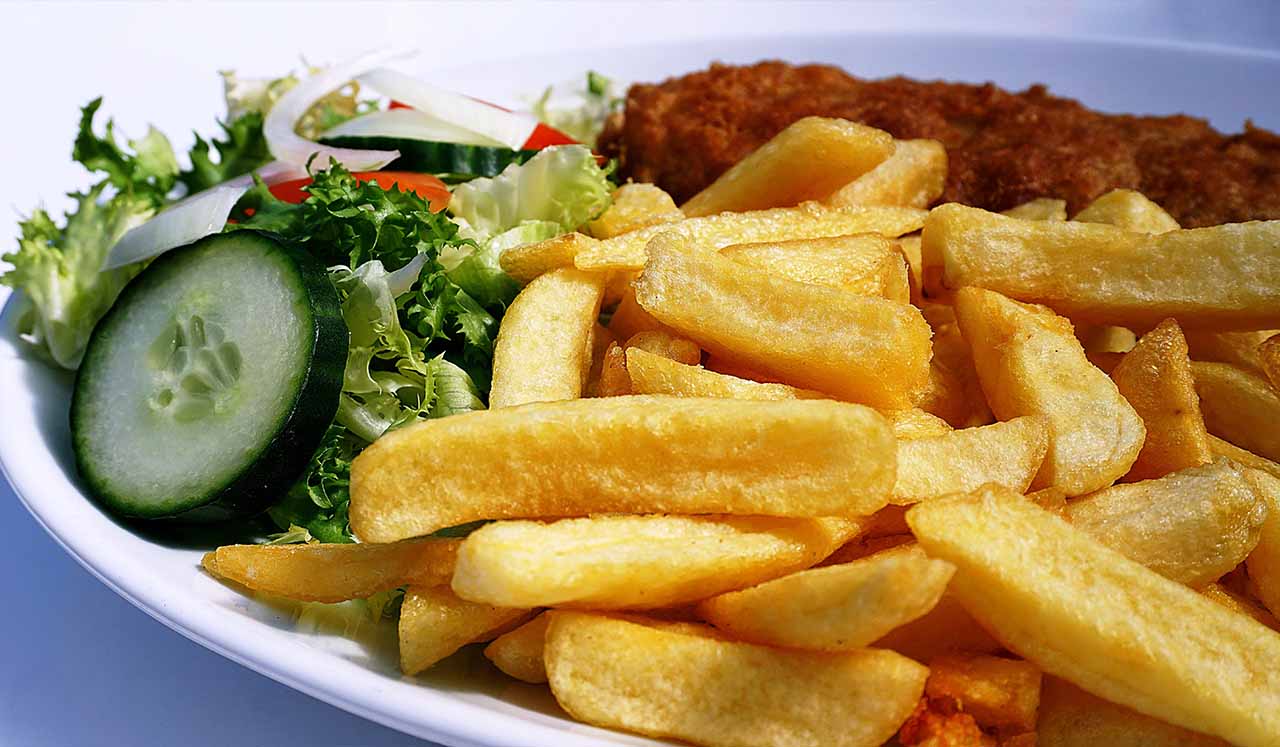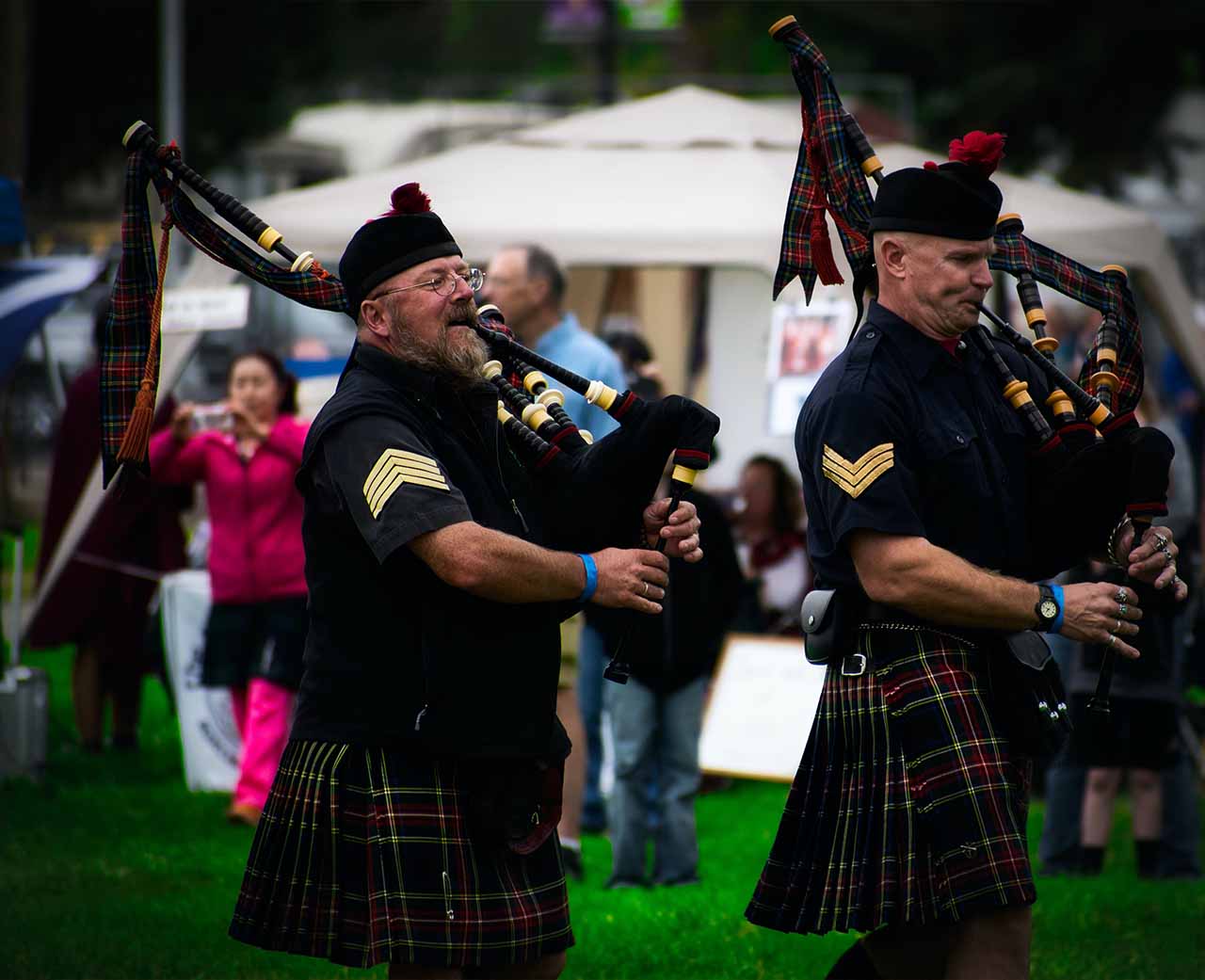Are you a Filipino who has been working abroad and would like to relocate to a fresh and exciting country? Scotland is the place to be, with its beautiful scenery, vibrant culture, and boundless possibilities. The opportunities and perks available to an OFW who relocates to Scotland are extensive.
In addition, Scots have a high quality of life thanks to the country’s illustrious educational system, excellent healthcare, and widespread commitment to work-life balance. Foreign workers will find it easy to settle in and feel at home in Scotland thanks to the welcoming nature of its people and the country’s growing multicultural society. If you’re thinking of making the move to Scotland, you’ll find some helpful tips below!
1. Scotland has unpredictable weather
You should migrate to Scotland if you enjoy the grey skies and gloomy atmosphere. It enhances the overall dreary, enchanting academic feel. The weather in Scotland is notoriously fickle. Rain, wind, and shifting weather patterns are to be expected throughout the day. No of the season, it is always important to have a plan B in case the weather takes an unexpected turn. Mild winters and somewhat moderate summers characterize the country’s temperate marine climate. However, because of its location and the influence of Atlantic weather systems, Scotland’s weather can be extremely different from that of other regions at similar latitudes.
Scots should always be prepared for the rain by having a waterproof coat on hand. A strong umbrella is also useful, since it can act as a makeshift roof in the event of a downpour. The best way to deal with the unpredictable weather is to dress in layers. A light sweater or cardigan is recommended even in the summer because temperatures might drop suddenly. Wearing a warm coat, hat, gloves, and scarf is essential in the winter. Waterproof or water-resistant shoes or boots are a need if you plan on venturing out into the countryside or up into the mountains, so pack accordingly. For urban spelunking or just long treks, a solid pair of robust walking shoes is a must.
Misty or foggy conditions can enhance Scotland’s already stunning landscapes, making for truly breathtaking views. If you want to be dry and comfortable while doing outdoor activities, it’s worth it to bring along a nice pair of waterproof or water-resistant pants. Last but not least, it’s smart to check the forecast and adjust your plans based on the weather conditions predicted for the day. You can make the most of your time in Scotland no matter what the climate throws at you if you pack for all kinds of weather.
2. Tipping culture is alive and well in Scotland
It’s crucial to familiarize yourself with the local cuisine and eating customs before relocating to Scotland. Scotland is one of the few countries where tipping is expected, especially in the service industry like restaurants and pubs. If the service you received was excellent, a tip of 10% to 15% of the total price is appropriate. Check to see if a service charge has already been included to the bill before deciding how much to tip. If there is already a service charge in the price, it is not necessary to give another tip, but it is always appreciated.
Tipping is rarely expected when ordering beverages at a bar. However, a little tip would be appreciated if you receive great service or if the bartender goes out of his or her way to help you. Taxi drivers, tour guides, and hotel employees all fall under the category of service providers for whom it is common to offer a little tip if the customer is satisfied.
Tipping is not expected or required, but is rather a nice gesture that is appreciated. Workers in the service industry in Scotland are guaranteed a wage of at least the legal minimum, therefore gratuities are not essential to their survival. If you’re in doubt ask a local or a member of staff if you need help deciding whether or how much to tip in a given case. Any amount you feel like leaving as a tip is appreciated, as tipping is simply a way to show gratitude for excellent service.
3. Scotland is a diverse country
If you’re an immigrant to Scotland, you shouldn’t be concerned about the country’s diversity. The positive aspect is that Scotland is home to many different ethnic and religious groups. Take advantage of the chance to interact with people of other cultures and broaden your horizons. The policies and activities of Scotland demonstrate the country’s dedication to multiculturalism and diversity. All citizens, regardless of their origin, are afforded the same legal protections and privileges by the Scottish government. The existence of anti-discrimination legislation ensures that all members of society are treated equally.
New arrivals to Scotland would do well to familiarize themselves with the country’s history, customs, and people. Most Scots are hospitable and tolerant, but you should still be mindful of their culture. Migrants can better integrate and connect with the local community if they take the time to learn about Scottish history, traditions, and even the local accents. Activities like volunteering, going to festivals, and engaging in intercultural dialogue can all help people feel more at home in their communities.
4. The language and accent
It may take some time to adjust to the distinctive sound of a Scottish accent. If you are having problems understanding the natives, don’t be shy about asking them to repeat themselves. In professional or more formal contexts, Scots frequently refer to one another by their surnames. The use of honorifics like “Mr.,” “Ms.,” and “Mrs.” is widespread. It’s worth noting that a sizeable percentage of Scotland’s population communicates fluently in the Scottish language, commonly known as Scots. Although it shares many linguistic features with English, Scots is a separate language with its own syntax, vocabulary, and pronunciation. Scots has its own regional variations and dialects across the country, despite the fact that English is the primary language of everyday use, especially in urban areas.
If you’re a new to Scotland, you might find it useful to learn some of the local lingo. These Scottish phrases will likely be recognizable to viewers of the hit historical drama Outlander. Here’s some examples of slangs or conversational words and phrases, you’ll be hearing often in Scotland.
The Scottish words “braw” and “bonnie” mean “beautiful” and “excellent,” respectively. While the word “wee” is a diminutive form of “little.” It’s a common way to talk about a tiny amount. When it is cold, damp, and miserable in Scotland, people use the word “dreich” to describe the atmosphere.
One of the most frequent forms of the word “yes,” “aye” is used in many contexts. Pronounced with a drawn-out “a” sound, it is an integral feature of standard Scottish speech. The word “Ken” is used in place of the word “know.” For instance, “I dinnae ken” might be translated as “I don’t know.”
As the Scots would say, “dae” means “do.” The question “Whit ye daein’?” translates to “What are you doing?” in English. “Dinnae fash yersel” can be translated as “Don’t worry” or “Don’t bother.” It’s a common way of putting someone at ease. While the phrase to “blether” is to talk aimlessly or for no apparent reason.
On the other hand, the word “scran” means “food” or “meal” in this context. In this context, “Let’s get some scran” would be understood to imply “Let’s get some food.” While A “bairn” is a baby or young child in Scotland.
To help you get around in Scotland, here are some slang terms and expressions you could hear. However, English is widely spoken and understood, so there shouldn’t be any major language obstacles for newcomers. Learning some Scottish jargon and slang can help you blend in with the locals and add a bit of levity to your conversations.
5. Food and beverage
Scotland’s cuisine is not limited to the national dish, haggis. Scotland’s distinct and wonderful cuisine has earned it worldwide renown. A classic delicacy, haggis is made with sheep offal, onions, and spices and is typically eaten with neeps (turnips) and tatties (potatoes). Black pudding, a sausage composed of blood, suet, and oatmeal, is another staple. Salmon, scallops, and langoustines are just a few examples of the seafood that has made Scotland famous, and it is typically eaten fresh and locally caught.
Scotland’s culinary scene offers something for everyone, with selections that span the spectrum from inexpensive to upscale. There is a wide variety of dining options, from fine dining establishments to quaint local pubs and food carts. Edinburgh and Glasgow, both popular tourist destinations in Scotland, are home to a diverse selection of restaurants, from Michelin-starred bistros to fast food chains. Fresh seafood is best enjoyed in coastal cities and fishing villages.
Here are some ways to cut costs when dining out in Scotland:
Discounted lunch menus and discounts are available at many eateries. You can save money on your dinner if you take advantage of these deals. Some eateries offer “early bird” or “pre-theatre” menus, served before the regular supper rush. These menus often offer set rates for a limited number of dishes.
One approach to save money is to order meals to go or buy it from a street vendor. Scotland’s major urban areas frequently have vibrant and diverse street food scenes. While Scottish pub grub is known for being hearty and reasonably priced. Scottish staples including fish and chips, stews, and pies may be found at pubs across the country. Make sure to visit this pub if you’re in the country!
Markets and food stalls in the neighborhood will include fresh vegetables, baked products, and regional delicacies at lower costs than larger supermarkets. Some eateries in Scotland have a “Bring Your Own Bottle” policy, which means you can bring your own booze and save money on drinks. Find out in advance if the restaurant allows BYOB.
If you want to try a lot of different things on the menu without breaking the bank, consider splitting a few plates with some friends or family. Food is often served in a tapas or family-style format at many eateries. Scotland’s world-renowned cuisine can be enjoyed on a budget if you’re willing to try new restaurants, take advantage of discounts, and prioritize supporting the local economy. Keep an eye out for any internet coupons or seasonal discounts that may be available.
6. Pubs are a big deal in Scotland
Scottish pubs have an important social role and are integral to the country’s culture. Learn about pub etiquette so you may enjoy the lively settings. Pubs play an important role in Scottish society, providing a welcoming location for both locals and tourists to mingle, unwind, and experience genuine Scottish culture. If you’re new to Scotland, going to a pub may be one of the best ways to immerse yourself in the culture and meet locals.
Pubs in Scotland come in all shapes and sizes, and each one has its own special personality. Some pubs are more famous than others, and the ones you choose to visit may depend on your tastes and where you live. Pubs like The Royal Oak and The Last Drop, both located on Edinburgh’s famous Royal Mile, are great examples of traditional Scottish watering holes. Experiences to remember can be had at Glasgow watering holes like the Victorian-era Horseshoe Bar or the whisky-centric Pot Still.
Therefore, why should tourists visit a bar? Pubs, being centers of community activity, are natural gathering places for Scots and foreigners alike. You can meet new people, hear interesting tales, and learn about the area’s history and customs this way. Traditional Scottish music, such as fiddles, bagpipes, and boisterous ceilidh music, is typically performed live in pubs for patrons to enjoy.
In addition, pubs are well-known for their comprehensive drink menus, which often feature a broad variety of whiskies, ales, and craft beers. Scotland is well-known for its whisky, and a trip to a local pub will allow you to try a variety of whiskies while being educated about them by friendly bartenders and whisky experts.
Enjoy substantial stews, fish and chips, or seafood caught right off the coast of Scotland in one of the many pubs in the area. Your exploration of Scottish cuisine would be incomplete without trying these meals.
They host parties, pub quizzes, and even live broadcasts of sporting events. Scots often congregate in bars to cheer on their favorite football teams, making for an electric and lively environment.
Visiting a pub in Scotland is a must for any tourist looking to meet locals, listen to live music, sample traditional tipples, or just soak up the friendly atmosphere. Please drink in moderation and observe proper pub etiquette by waiting your time at the bar and being respectful of other patrons and local customs.
7.The kilt and the tartan
You’ve seen kilts and tartan patterns before, right? They’re practically synonymous with Scotland and frequently appear in media depictions of the country. Kilts and tartans have deep historical and cultural roots in Scotland. Scotland’s traditional attire is the kilt, a pleated skirt that falls just above the knee. Tartan fabric, with its alternating horizontal and vertical bands of color, is often used for this purpose. Scottish clans, families, regions, and organizations all have their own distinctive tartan designs that are worn with pride as a symbol of their history and identity.
Unless you have a connection to a certain clan or are attending a formal function, it is not necessary for you to wear a kilt or tartan as a newbie to Scotland. The kilt is a traditional Scottish garment worn at formal events such as weddings, funerals, christenings, and the Highland Games. If you wear a kilt, you should think carefully about the symbolism and history it represents.
There are specific factors to think about when donning a kilt. A kilt is not complete without the sporran (a pouch worn at the front), sgian-dubh (a short dagger customarily tucked into the sock), kilt pin (worn on the front apron), belt, and hose (knee-length socks). If you want to look your best, consulting a professional kilt shop or hiring a kilt outfit is a good idea.
It’s also useful to know the history behind tartans. A person’s heritage or allegiance can be deduced by the tartan they wear, as each design is associated with a certain clan or family. One way to learn more about one’s Scottish roots is to research one’s family tartan or contact a group focused on genealogy or Scottish culture. It is important to note, however, that a universal or fashion tartan, which may be worn by anybody who admires Scottish culture regardless of clan connection, is available to everyone.
8. Bagpipes and Ceilidhs
The bagpipes and Ceilidhs are two defining features of Scottish culture that are widely featured in media and tourism campaigns, respectively. The bagpipes, a type of traditional Scottish music instrument, have deep cultural significance. The rousing sound of the bagpipes is commonly associated with traditional music and military marches in Scotland. The sound of bagpipes can be heard at many celebrations, including weddings, Highland games, and parades.
Even as an outsider, you can recognize and enjoy the allure of bagpipe music. Attending an event with bagpipes is a great way to immerse yourself in Scottish culture and get a taste of the country’s rich heritage. Unless they have a strong desire in doing so, novices need not worry about picking up the bagpipes themselves.
Instead, ceilidhs are vibrant social gatherings that feature music, dancing, and storytelling. Traditional Scottish dances, or “ceilidhs,” bring people of all ages and walks of life together to celebrate community through dance. A “caller” directs the dancers through the moves, so even those with little dance experience can join in the fun.
Visitors are invited to attend ceilidhs because they are a great way to learn about Scottish traditions, meet new people, and have a good time. The venues for ceilidhs range from local community centers and bars to larger public events like fairs and festivals. Live traditional music, such as fiddles, accordions, and sometimes bagpipes, is a common component. A positive and upbeat attitude will serve you well at a ceilidh. Don’t feel bad if you don’t know the moves to the dances at first; that’s part of the fun! Experienced dancers are often present at ceilidhs to teach the moves to newbies!
9. They respect nature so much
If you’re a nature lover or a plantito or plantita, then you’ll love to move in Scotland and its not hard to see why! The scenery and natural wonders in Scotland are stunning. The Scots are known for their close connection to the land and their profound respect for nature. Scotland’s people place great value on the country’s natural landscapes, which include mountains, glens, lochs, and coastlines. A lot of people look to the beautiful scenery of Scotland to recharge their batteries and find new ideas.
Scottish values place a premium on nature preservation and environmental responsibility. There is a deep sense of duty among Scots to save the country’s natural wonders for the sake of future generations. Sustainable practices, such as renewable energy initiatives and eco-tourism, are encouraged in an effort to preserve the natural environment and its inhabitants.
The Scots love to be outside and partake in activities that allow them to connect with nature. People who spend time outside, whether in the Highlands or along the shore, have a deep appreciation for the land. Scots value traditional activities like fishing, birdwatching, and wildlife watching because they help them connect with nature.
The Scots have a deep respect for the outdoors that goes beyond typical tourist pursuits. It permeates all of their festivals, from the Highland games to the honoring of revered geographical features like Ben Nevis, Loch Ness, and the Isle of Skye. The close relationship between the Scots and their natural surroundings is further attested to by the fact that traditional folklore and legends frequently make use of the supernatural features of the Scottish terrain.







